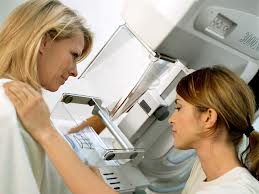Low-Energy Findings on Contrast-Enhanced Mammography Commonly Associated with Malignancy
 A study published in Radiology reports that mass enhancement on recombined images using contrast-enhanced mammography (CEM) was most commonly associated with malignancy, especially when associated with low-energy findings.
A study published in Radiology reports that mass enhancement on recombined images using contrast-enhanced mammography (CEM) was most commonly associated with malignancy, especially when associated with low-energy findings.
The study by researchers at Beth Israel Deaconess Medical Center aimed to investigate the the rates of malignancy of enhancement findings on CEM images in the presence or absence of low-energy findings using the Breast Imaging Reporting and Data System (BI-RADS) lexicon developed for mammography and MRI. While the use of CEM is increasing, there is limited data on the evaluation of findings on recombined images and the association with malignancy.
In the study, 371 women received diagnostic CEM between December 2015 and December 2019. Three breast imagers with 5-25 years of experience using the BI-RADS mammography and MRI lexicon reviewed the images. Sensitivity was 95% (104 of 109 [95% CI: 90, 98]), specificity was 67% (176 of 262 [95% CI: 61, 73]), positive predictive value was 55% (104 of 190 [95% CI: 47, 62]), and negative predictive value was 97% (176 of 181 [95% CI: 94, 99]).
The authors found that 190 CEM studies with enhancing lesions with a low-energy finding were more likely to be malignant (59%, P < .001), with the mass enhancement type being most common (71%). Positive predictive values of foci, non-mass enhancement, and mass enhancement without low-energy findings were 6%, 24%, and 38%, respectively. The MRI lexicon to describe recombined imaging showed high interobserver agreement (k = 0.84); neither background parenchymal enhancement nor breast density was associated with enhancement type (P = .19 and P = .28, respectively). Enhancement types were more likely to be benign when not associated with low-energy findings; however, they should still be viewed with suspicion, given the high association with malignancy. The authors noted that all enhancing lesions should be considered for follow-up or biopsy.